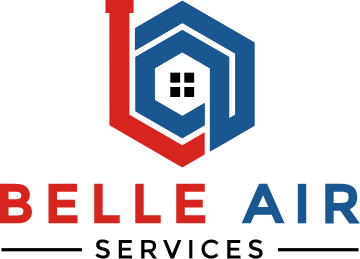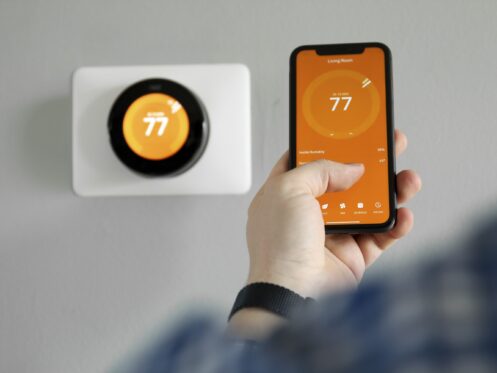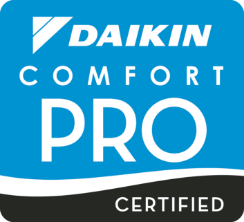Regulatory changes, advances in technology, and growing environmental awareness are three contributing factors driving the HVAC industry’s evolution. Many specific trends will shape the industry’s outlook in 2025. Consumers, manufacturers, and installers will be impacted in different ways. From smart technologies to energy-efficient possibilities, you benefit from knowing the most prominent HVAC trends happening in 2025.
Smart Systems
Integrating smart technology into residential HVAC systems is changing how families control their indoor climates. Several models of smart thermostats are already enjoying tremendous popularity. However, the coming wave of innovation will include fully integrated systems that use the Internet of Things and AI technology to optimize performance, learn user preferences, and predict maintenance requirements. A smart system is something you can control through a smartphone app for energy savings and convenience. The year 2025 will see many HVAC units feature smart home ecosystem compatibility, such as Google Home or Amazon Alexa. Voice control capabilities are a convenience that a growing number of households are adopting.
Environmental Sustainability
Energy efficiency isn’t just a matter of saving money on utility bills. Consumers and manufacturers alike want HVAC systems that minimize energy consumption but perform optimally, balancing environmental impact with residential comfort. The U.S. Department of Energy has efficiency requirements for many HVAC systems. These requirements have been recently updated. Regardless of government mandates, many manufacturers are intentionally moving to more eco-friendly refrigerants. R-454B and R-32 are two examples of products with a reduced global warming potential compared to older chemicals. Solar energy is now powering many HVAC systems, and renewable energy sources are increasingly viable options, thanks to lower costs and technological advancements.
Decarbonized Systems
Around the world, there’s a push for net-zero emissions, and the HVAC industry is emphasizing decarbonization. Conventional gas-powered heating systems are being used less, and heat pumps are gaining traction. These systems handle cooling and heating, and they use electricity instead of directly burning fossil fuels. Power that comes through a local grid might be produced using fossil fuels, but heat pumps can be paired up with any available renewable energy sources. In 2025, heat pump technology should become more compatible with colder climates and more efficient in all locations. Utility companies and governments alike are offering incentives that encourage the adoption of heat pump technology, boosting their already growing popularity.
Improved Indoor Air Quality
We understand a lot regarding the importance of indoor air quality and removing contaminants from our indoor air. In 2025, a growing number of HVAC systems are going to include advanced IAQ technologies, such as bipolar ionization, UV-C light disinfection, and HEPA filters. Using these options creates healthier indoor environments by reducing airborne pathogens, allergens, and pollutants. Smart IAQ sensors provide real-time monitoring of air quality, and a growing number of users are adopting them to handle issues proactively. This trend is particularly pronounced for healthcare facilities, educational establishments, and commercial spaces.
Personalization and Zoning
Zoning technology enables users to manage the temperatures of certain zones or even individual rooms inside a home or building. Having this feature available to you improves your comfort, but it also minimizes wasted energy. Many 2025 HVAC systems will feature advanced zoning capabilities compared to previous years, especially for homeowners. Personalization happens with AI technology that analyzes usage patterns and makes automatic setting adjustments that occupants prefer. For example, a smart system might cool down a bedroom at the end of the day or direct more or less airflow to a room based on how many people are inside it at the time.
Integration With Renewable Energy
The demand for renewable energy is growing, but so are the actual sources. HVAC systems integrated with wind turbines and solar panels are a crucial trend already, and 2025 should see even more of this. Solar-assisted HVAC units can reduce energy costs and minimize environmental impact while keeping occupants comfortable while inside. Manufacturers are making more systems that can work with batteries and other energy storage solutions, as well as renewable energy sources. This integration empowers businesses and households to enjoy more energy independence.
Advanced Diagnostics Predicting Maintenance Requirements
Traditional HVAC maintenance is typically response-driven, relying on reactive measures that deal with issues after they happen. Advanced diagnostic tools will be more common in 2025 HVAC systems that have predictive maintenance technology that can change this approach. AI programming and physical IoT sensors mean HVAC systems can monitor their own performance and identify issues before they result in system failure. Such capabilities are quickly becoming an industry standard that reduces repair costs and downtime while letting equipment last longer.
Scalable, Modular Systems
Modular HVAC systems have taken root in commercial buildings due to their flexibility. Components can be removed or added based on a certain building’s needs. This form of scalability is tremendously advantageous for industrial and commercial applications because usage and space requirements change over time. Modular HVAC systems will start spilling over more into residential markets in 2025 for homeowners who crave adaptable solutions they can customize to their needs and situations. Systems like these are simpler to install, upgrade, and maintain, making them an economical choice.
Hydronic Systems
Hydronic heating and cooling use water for temperature transfer. These systems are gaining acceptance as a tremendously efficient alternative in contrast to conventional HVAC systems. Many homeowners integrate hydronic systems with chilled beams or radiant floor heating to enjoy comfortably consistent temperatures in their residences. In 2025, several hydronic technology advancements should make these systems simpler to install and boost their energy efficiency. Their low environmental impact and ability to work with renewable energy sources are two factors driving their popularity.
Improved Design Aesthetics
For many years, HVAC units were completely functional in design, but they were often visually unattractive. Modern manufacturers are now emphasizing improved designs with enhanced aesthetics so their HVAC systems can meld seamlessly with a variety of interior settings. Wall-mounted units are increasingly compact in size, and systems featuring customizable finishes are getting more popular with many consumers. HVAC designs in 2025 are likely to prioritize style as much as functionality, catering to households that cherish aesthetics as much as system performance.
Keep Pace With the Changes
The 2025 HVAC industry will include significant transformation. A changing landscape in consumer expectations will fuel a lot of this, and it will be driven by a renewed emphasis on sustainability and technological advancements. From the integration of renewable energy and smart systems to better indoor air quality and energy-efficient designs, these trends can help you keep your home updated with modern options or help you prepare it for the market. These innovations can make your home more convenient and comfortable while also making the future more sustainable.
Belle Air Services offers heating and cooling services to households in Playa Vista, CA, and the surrounding communities. We offer services such as HVAC equipment installation, repair, and routine maintenance. We service heat pumps and ductless HVAC. We can also help you address your indoor air quality concerns.
Contact Belle Air Services for your home’s HVAC needs in 2025 and beyond.





